卡塔拉海星
Thromidia catalai is a sea star species. It was first described by Pope and Ross Robert Mackerras Rowe circa 1977. Thromidia catalai belongs to the genus Thromidia in the family Mithrodiidae.
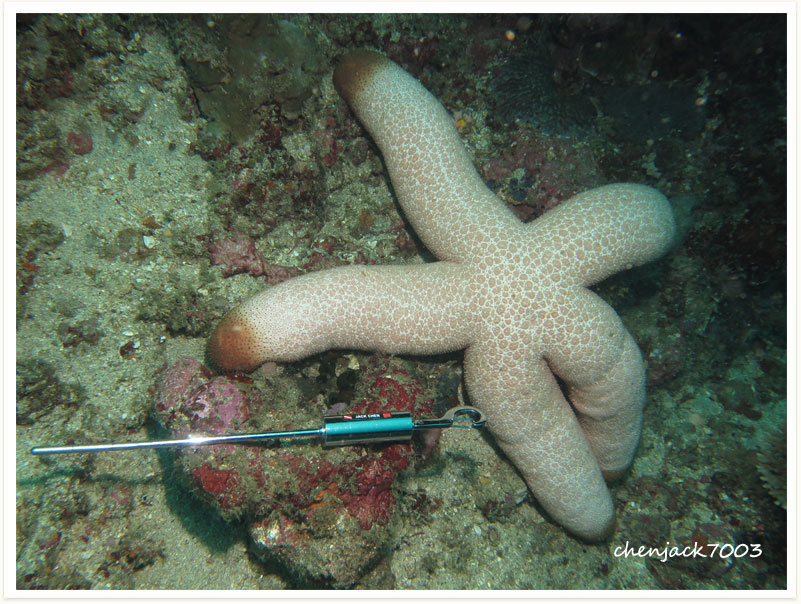
 Underwater Photography
Underwater PhotographyThromidia catalai is a sea star species. It was first described by Pope and Ross Robert Mackerras Rowe circa 1977. Thromidia catalai belongs to the genus Thromidia in the family Mithrodiidae.

The body form of the crown-of-thorns starfish is fundamentally the same as that of a typical starfish, with a central disk and radiating arms. Its special traits, however, include being disc-shaped, multiple-armed, flexible, prehensile, and heavily spined, and having a large ratio of stomach surface to body mass. Its prehensile ability arises from the two rows of numerous tube feet that extend to the tip of each arm. In being multiple-armed, it has lost the five-fold symmetry (pentamerism) typical of starfish, although it begins its life cycle with this symmetry. The animal has true image forming vision.
Lysiosquillina lisa is a praying mantis of the Lysiosquillidae family. The scientific name of the species was first validly published in 2001 by Ahyong & Randall.

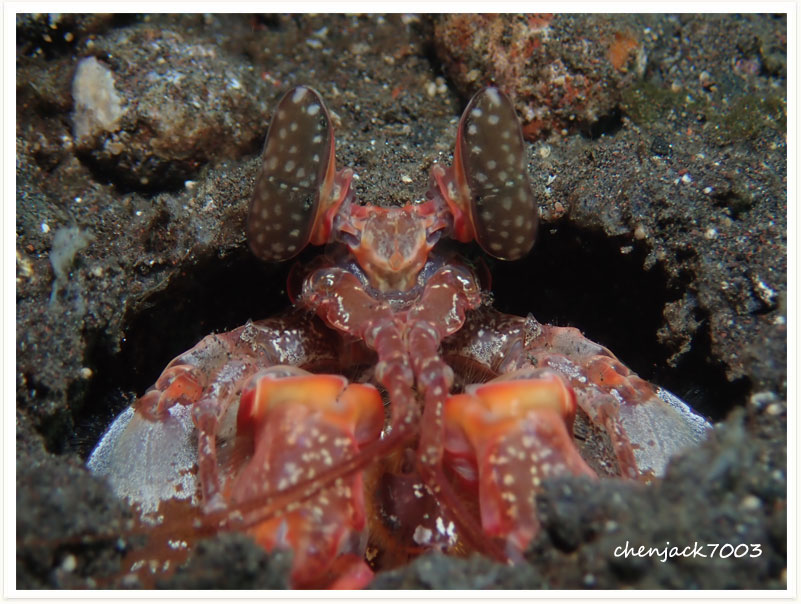
Thelenota ananas (pineapple sea cucumber) is a species of sea cucumber characterized by its large size, warm colors, and pointed, star-shaped teats covering the entire body, grouped in rows of 2 or 3, as seen in Figure 1. Their body is reddish-orange in color, with the teats slightly darker and able to reach up to 70 centimeters (28 in) in length, with a weight of between 3 kg to 6 kg, and have numerous large tube feet on the flat ventral side of their body. T. ananas is a slow growing organism.
This relatively large pleurobranch is often found in quite large populations in shallow lagoons, reef crests and pools and sea grass beds. It usually grows to about 10cm long but can grow to over 30cm. This species feed on ascidians.
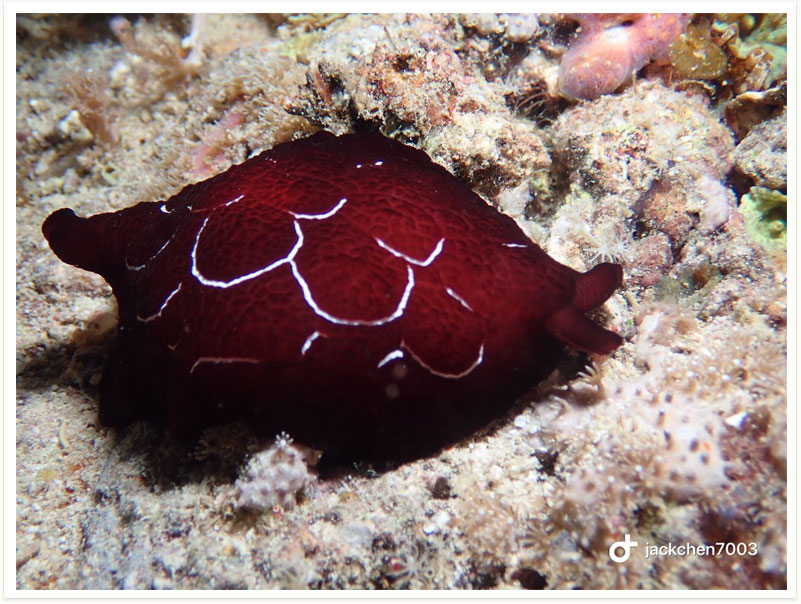
Platydoris formosa is a flat nudibranch.The body colour is yellow with unregulary and large red-orange patches.This species grows up to 18,0 cm in length. Rhinophores are yellow in colour.This flat nudibranch is nocturnal and feeds on siliceous sponges.
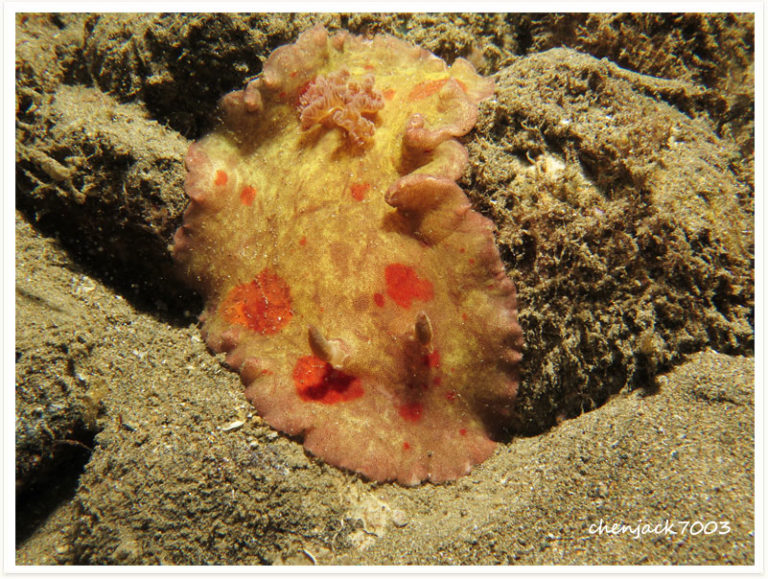
Miamira alleni looks like a xeniid soft coral. It is very well camouflaged.This nudibranch probably feeds on sponges, like other Miamira species.Miamira alleni lives in shallow water and reefs.
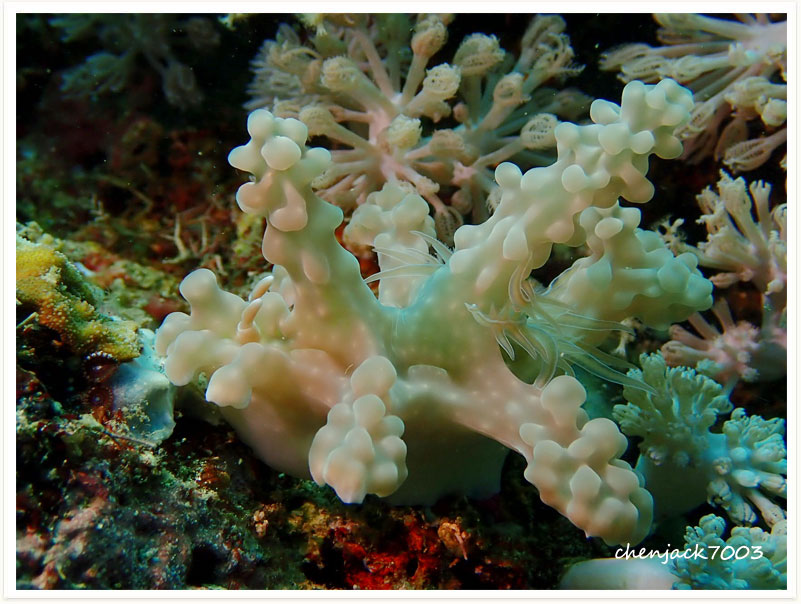
This species lives in sea grass beds.It is very well camouflaged with their characteristic green color and their appearance. With an net-like oral veil it routs out crustaceans, which Melibe eats.Melibe viridis can grow to over 12,0 cm in length.
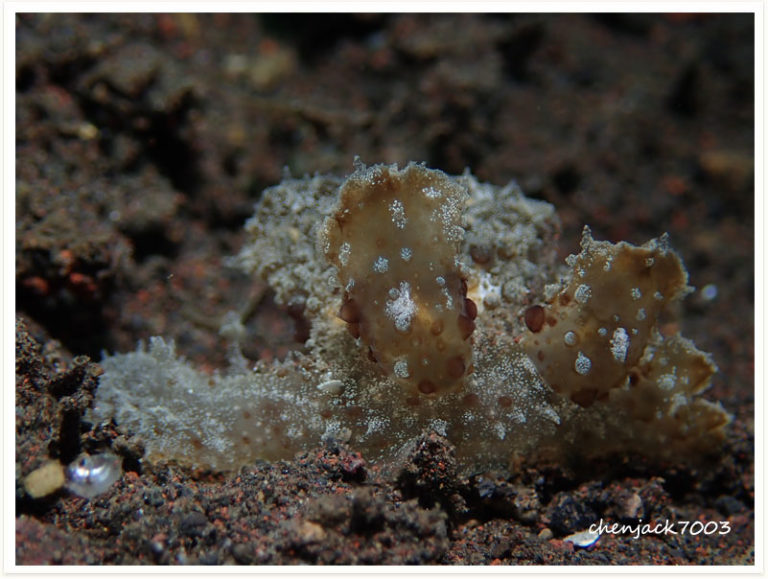
Jorunna funebris, common name the dotted nudibranch, is a large species of sea slug, a dorid nudibranch, a shell-less marinegastropodmollusc in the family Discodorididae.
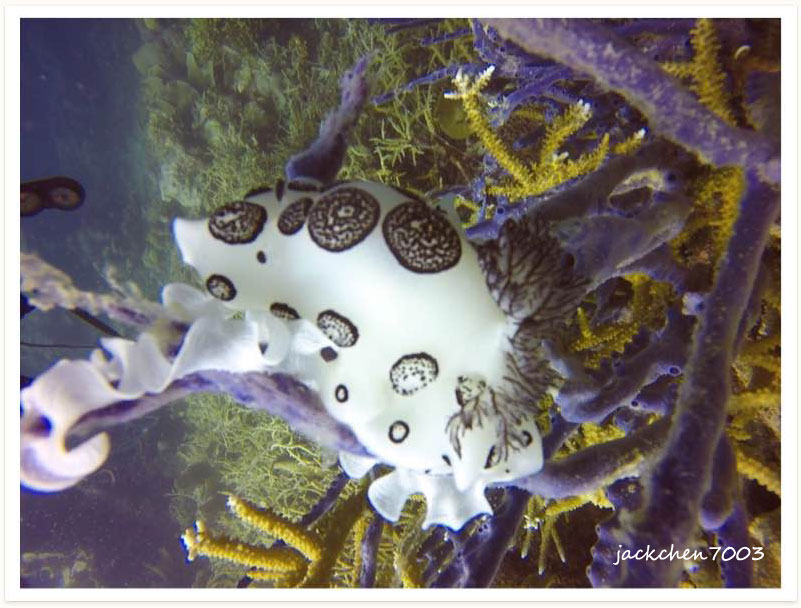
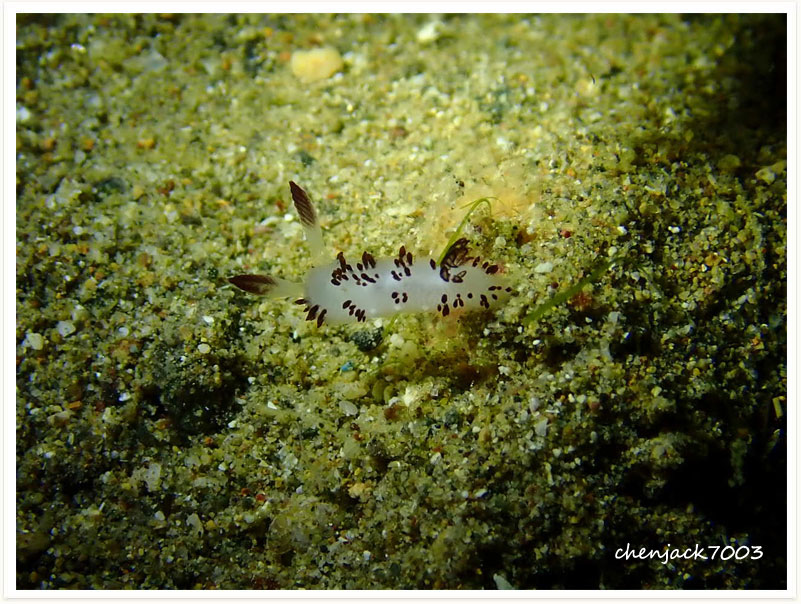
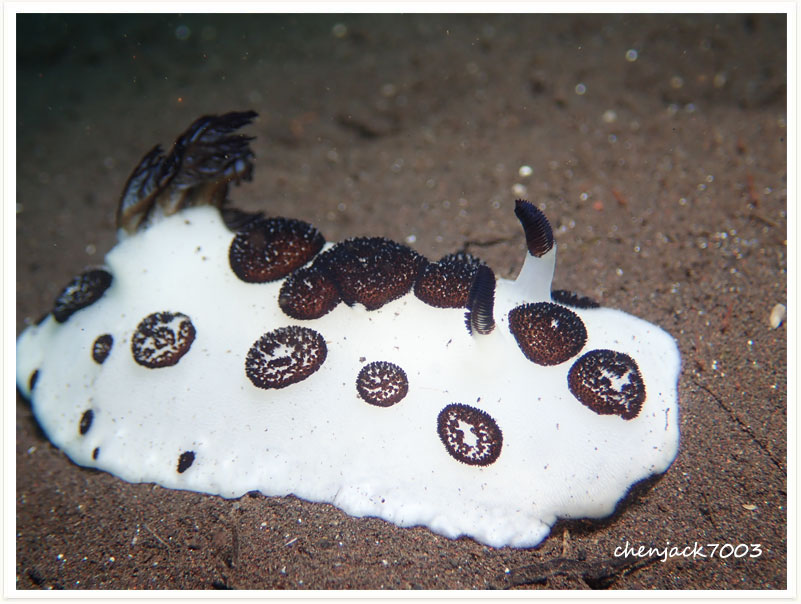
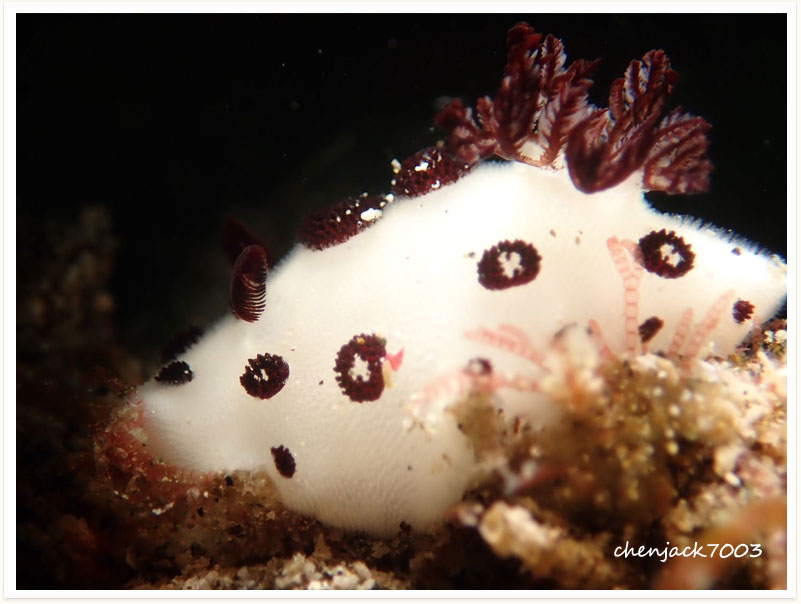
also known as the wedge sea hare, is a species of large sea slug, a marine opisthobranchgastropodmollusk in the family Aplysiidae, the sea hares

The body of Discodoris boholiensis is roughly oval-shaped, with a wavy margin, broad and rather flattened, up to 12 cm (5 in) long and 8 cm (3 in) wide. The head is not clearly demarcated from the body. The rhinophores are dark brown, with a vertical white line on the anterior surfaces, and are able to retract into their sheaths; these are also dark brown and have wavy margins. The dorsal surface of the sea slug has a thicker longitudinal ridge, the visceral hump, in the centre; it is translucent and whitish, with irregular brown patches and spots. There are six external gills, which can also be retracted, of which the hind two are divided into two branches; the gills are brown with a distinctive pattern of white lines. The edge of the mantle is undulating, leathery and semi-rigid, streaked in dark brown and creamy-white, beige or yellowish, and dotted with dark brown and white speckles. On the underside of the animal, the foot is long and oval, being much narrower than the mantle, and has a dark brown edge.
Dendrodoris carbunculosa is a large sea slug and grows at least 25,0 cm.The underside of the mantle is a uniform brown or reddish brown,sometimes with darker patches (Dendrodoris tuberculosa havelarge white oval spots). The tubercles are large and individual (D.tuberculosa have packed close together tubercles, which are often compound.
Aluterus scriptus is a medium size fish which can grow up to 110 cm (3.6 ft) in length. The body shape looks like an elongated oval, strongly compressed. Its background body coloration is olive-brown or grey depending on its surrounding environment, irregular blue lines and spots are distributed on the body mixed with some black spots mainly on the head. The colors may quickly vary depending on background similar to an octopus’s. Fish observed in the Virgin Islands might lie flat on the sand and become pure white or change to any of the other representative colors. The mouth is small and at the end of its pointed snout. Like all the Tetraodontiformes, it has no pelvic fin but has two particular dorsal spines; the first anterior one is long, slender and erectile, located just over the eyes, the second is small and not easy to see but it locks the first one when it is erected.[3] The rounded caudal fin is quite long and can be displayed as a fan.